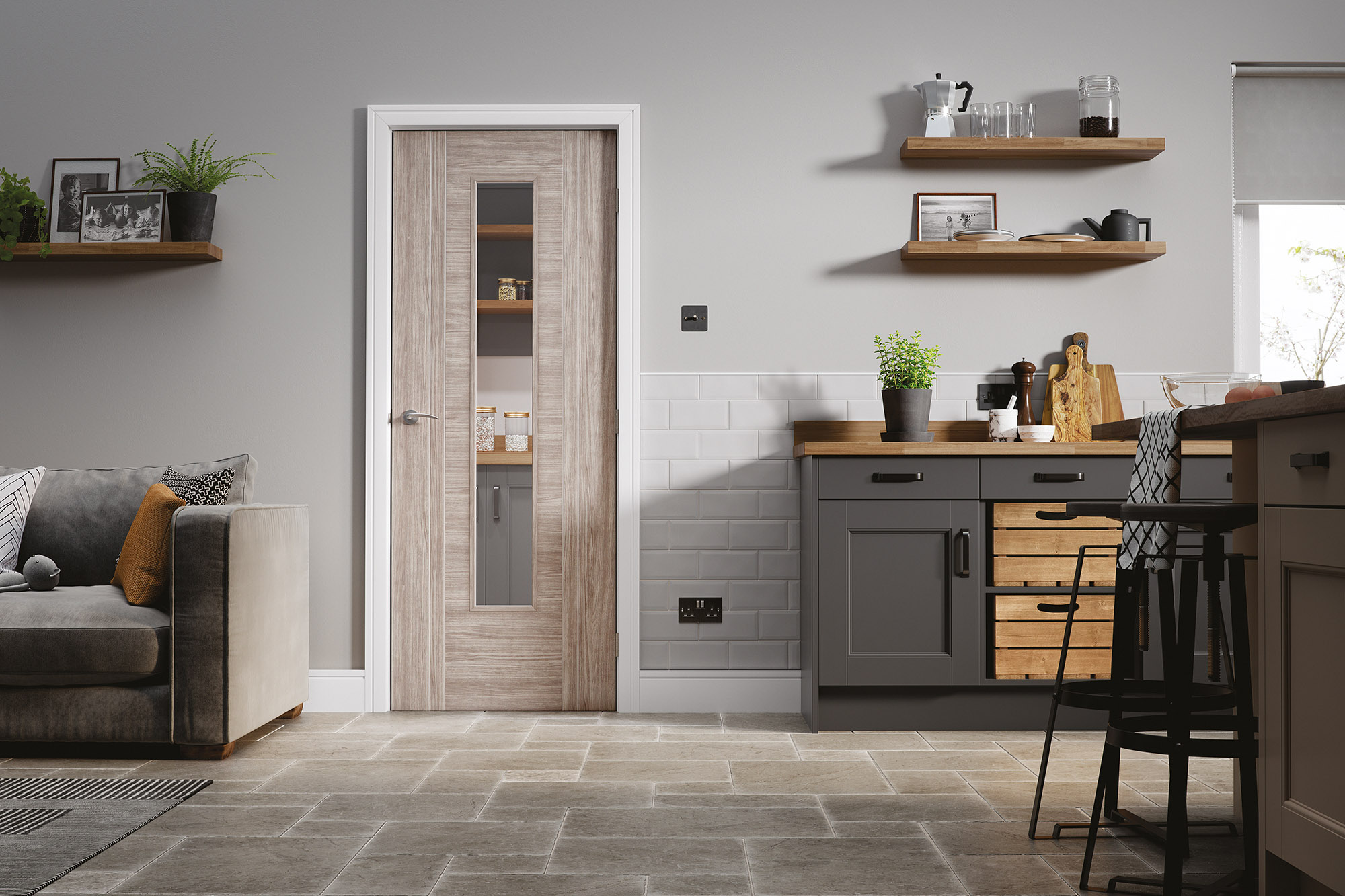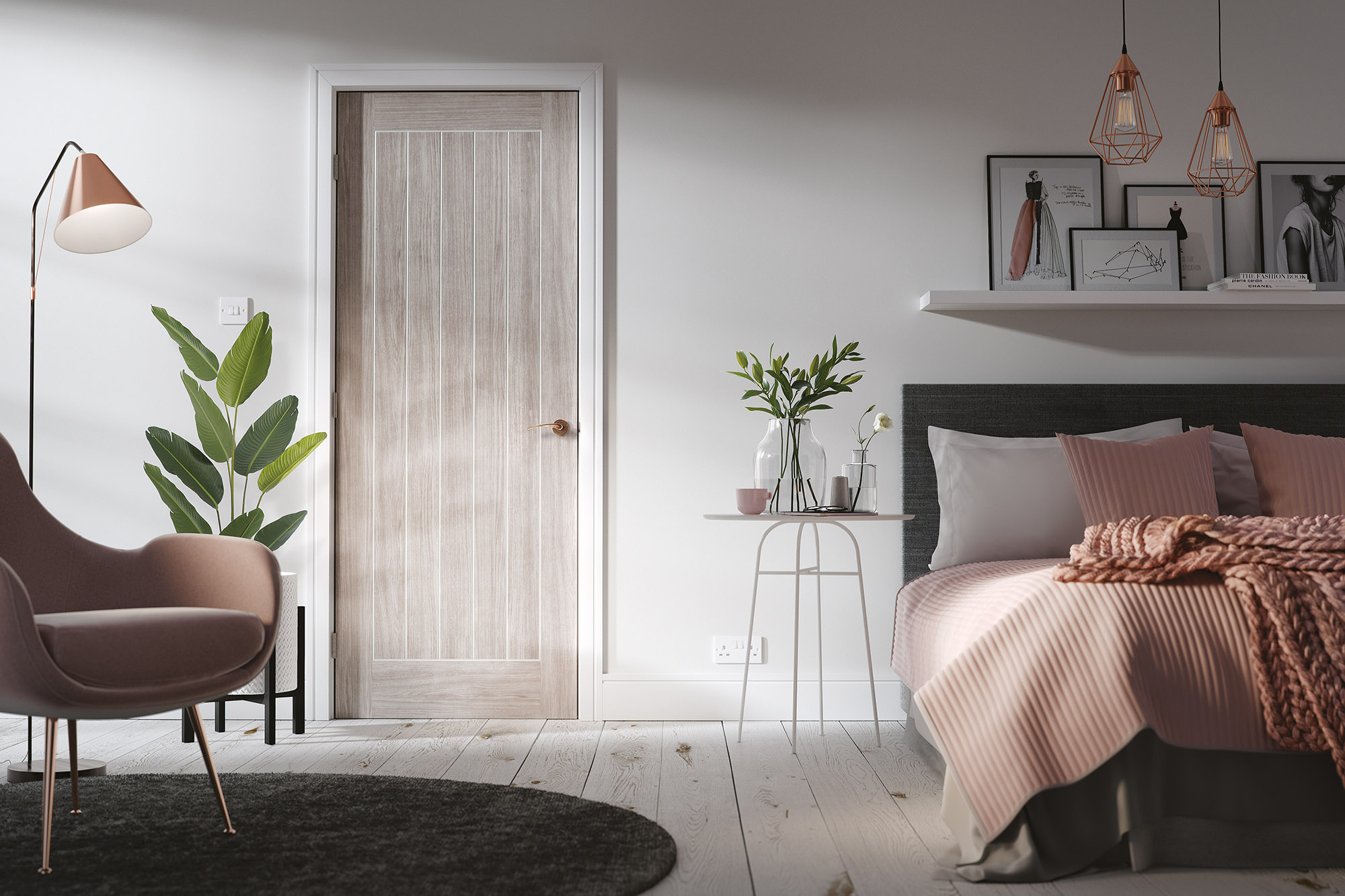
Laminate doors are a popular choice for homes, offices, hospitals and schools all over the UK. When choosing an internal door, many people opt for laminate doors because of their practicality, value and durability.
They are different from other internal doors, such as veneer or timber, and have unique properties that would make them an excellent choice for your home.

Laminate doors are made from layers of MDF wood, cardboard and resin, before being decorated with colour or texture to create different desired effects. They’re also very easy for manufacturers to produce so they’re usually cost-effective and offer a good value alternative to traditional timber doors.
Laminates were introduced to the market in 2018, using innovative new technology to counteract the problems associated with traditional timber doors, such as porous surface texture and the limited choice of colours available.
Just like laminate flooring, this core material can be made in all kinds of colours and styles to suit the decor of your home, whether you prefer modern or classic interiors. They do not need to be painted or varnished: they come ready to hang and they’re even moisture resistant.
The construction of laminate doors means they are very robust, with a protective top layer which is ideal for high traffic areas and heavy use. This means they are very durable and easy to clean - even industrial cleaning products can be used on laminate doors so they are also very hygienic. This is why many heavy-use commercial buildings (including shops, offices, restaurants, hospitals, and schools) choose internal doors.
It’s mainly used for internal doors, but it can also be used for balconies or other external doors. They can even be made with glass panels and they’re usually suitable for use with all types of door handles.
Generally, they are seen as an easier, most cost-effective option compared to timber doors, with all the benefits of a wood construction without the care implications.
A laminated door is generally made of wood (MDF, strong plywood, solid mahogany or other timber) for stability, compressed with another filling material such as cardboard or porous particleboard. The door is then finished with a layer of laminated plastic which gives it the protective finish. The layers are fused together using high pressures and temperatures in a man-made process.
These layers create a strong product that’s built to last and can withstand high impact and high traffic environments - perfect for hallways, living areas or commercial buildings. They still feel sturdy like heavyweight timber doors, but the core is lighter than a traditional wooden door.
Depending on the structure and materials used, different laminates can also offer different levels of soundproofing and insulation.
The top layer of laminate doors is what makes them unique to traditional timber doors or veneer doors. This laminate layer can be produced in any colour or design. If you prefer a real wood look, you can choose a laminate door with a wood-effect finish or pick a colour associated with natural materials such as oak, mahogany or beech.
Alternatively, since the laminate door is finished in a man-made top layer, you can choose any colour of door to create a modern alternative to a wooden aesthetic. Many commercial buildings may use laminate doors so they can be built in consistent colours to match their business logo. Similarly, private homeowners might prefer a specific RAL colour door to match their existing interior or paintwork.

If you’re wondering how to tell the difference between veneer and laminate, the answer is in the materials used. For a veneer door, a thin layer of real hardwood is used with a cheaper material like plywood, creating a door that looks and feels like natural wood. Laminate doors have an artificial surface on top of a bonded composite core, so the look and feel is different.
Laminate:
Wood Veneer:
Veneer can be more expensive than laminate because it’s made with real wood and is harder to produce. If you prefer a natural wooden look where you can see the grain textures of the material, veneer might work better than laminates.
However since laminate is easier to produce, it’s generally more cost-effective. Many homeowners also think laminate is also better than veneer because it’s easy to care for and you don’t need to be as gentle with the product.
RELATED: How to clean laminate doors
Many home-owners are already using laminate flooring. It can be made in any number of textures or colours to suit your home and it’s easy to clean and care for. In a similar way to real wood flooring, timber doors can be porous and susceptible to stains or scratches so it’s easy to see why laminate doors are becoming more popular.
If you’re looking for a durable, cost-effective internal door for your home, laminates should definitely be a consideration. Browse our range of internal doors or contact our team for more help and advice.
